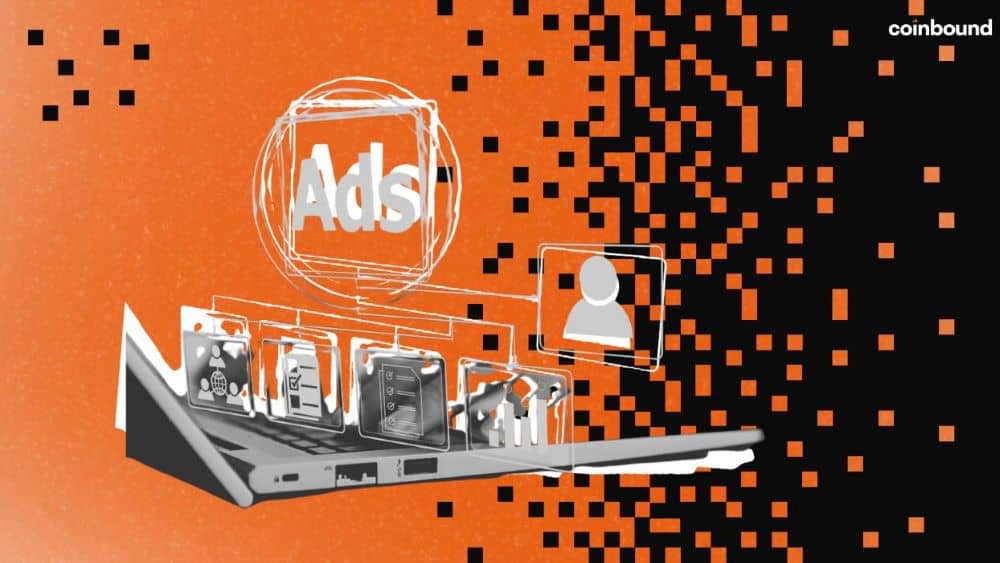Crypto ad networks love to promise reach. But the truth is, a good-looking dashboard and “100M monthly impressions” means nothing if the traffic’s low quality, untraceable, or flat-out fake.
Web3 brands burn thousands this way, especially during token launches or NFT mints. I’ve seen teams spend $20k in a week, only to realize the clicks were mostly bots and no conversions were even tracked.
We created this checklist for founders, marketers, and growth teams in Web3 to properly vet a crypto ad network before dedicating their ad budget to a platform. You’ll get faster ROI if you ask the right questions.
TL;DR: Quick Copy-Paste Crypto Ad Network Checklist
A good crypto ad network should prove it can deliver real traffic, clear reporting, and actual performance. When evaluating options, confirm the following:
- Publisher Transparency: They should provide a legitimate publisher list and be transparent about where your ads will be displayed.
- Performance and Reporting: Expect relevant campaign benchmarks, and confirmation of access to real-time data or daily reporting.
- Trust and Reliability: Verify their fraud protection measures and check for genuine, recent case studies or referrals.
- Communication and Flexibility: Know your dedicated point of contact for the campaign and be able to approve a test budget before scaling.
1. Ask for a Real Publisher List
If they can’t give you actual domain names where ads run, walk.
You want:
- A list of sites (not “categories” or vague verticals)
- Format types (banner, native, popup, content)
- Clarification on owned vs brokered inventory
Some reputable networks are more transparent than others. If you need a starting point, check out this list of the top crypto ad networks. It breaks down what each one offers and where their strengths lie.
2. Get Benchmarks Relevant to Your Campaign Type
A wallet project should not rely on CTRs from a play-to-earn game in 2021. Push for recent performance metrics tied to your category.
Ask for:
- Click-through rate (CTR) and cost-per-click (CPC)
- On-site behavior: bounce rates, session time
- Conversion examples (newsletter signups, testnet usage, token swaps)
If they only talk about impressions, they don’t measure what matters.
3. Demand Real-Time or Frequent Reporting Access
It’s shocking how many crypto ad networks still send post-campaign PDFs and call it “reporting.”
What you should expect:
- Daily breakdown of spend, clicks, CTR
- UTM support so you can see what converts
- Geo, device, and time-of-day segmentation
- Access to campaign data—not summaries
If they hide behind email updates, they’re hiding something else too.
4. Ask What They Do About Bot Traffic
Crypto ads attract bots. If the network can’t explain how they deal with that, you’re probably paying for garbage.
Look for:
- Bot and IP filtering
- Click fraud protection tools
- Manual traffic audits
- Refunds or credits for invalid traffic
5. Confirm You’ll Know Exactly Where Ads Run
You should know—before, during, and after the campaign—where your brand is being placed.
Clarify:
- Will you get a pre-launch site list?
- Can you blacklist low-quality or scam-adjacent sites?
- Will you get a post-campaign placement log?
If not, you’re paying for mystery traffic. And that never ends well.
6. Ask Who Else Has Used Them (and What Happened)
Logos on a landing page are easy. Performance is harder.
What you want:
- One or two case studies with real results
- References from similar Web3 brands (bonus if you can actually message them)
- Evidence that legit crypto publishers trust them too
Don’t trust the deck. Ask for receipts.
7. Check Their Support Model Before You Buy
If you’re on your own mid-campaign, you’re going to burn time and money fixing things they should’ve prevented.
Ask:
- Will I have a dedicated contact?
- Do they review performance during the campaign, or just at the end?
- What’s the support response time (in hours, not days)?
If they ghost you after the contract’s signed, you’re stuck.
8. Always Start With a Test Budget
This is non-negotiable. Any good ad partner should welcome the chance to prove value with a test flight.
Structure it like this:
- Set a small, defined spend cap
- Establish target metrics (CTR, CPC, conversion rate)
- Define what success looks like before it starts
- Be ready to walk away if results don’t land
If they push back on testing, they’re betting you won’t check results.
Even Trusted Partners Need Vetting
Crypto ad networks range from highly optimized to totally opaque. Don’t let branding or fast replies fool you. Ask questions. Validate everything. And don’t confuse “crypto reach” with quality traffic.
Coinbound crypto marketing agency works with ad partners that pass this checklist, because we’ve already run the experiments. If you want eyes on a media plan or someone to audit a pitch before you sign, drop us a line. We’ll tell you if it’s worth it.
One network we’ve worked with that stands out for speed, transparency, and scale is Mintfunnel—especially when you need guaranteed media placements bundled with programmatic reach. Still, even trusted partners benefit from being vetted with the same checklist. That’s how you avoid waste and keep performance accountable.








